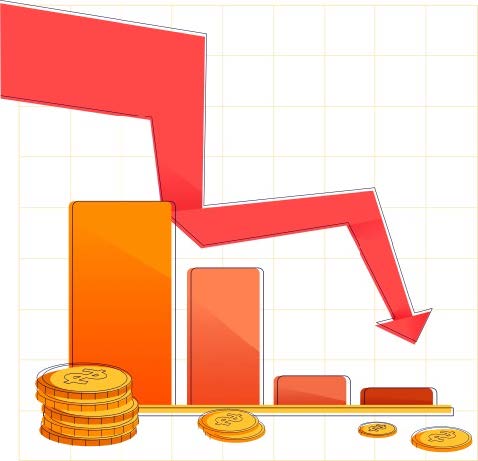
Grades 9-12

Don't have an account yet? Sign up for free
Don't have an account yet? Sign up for free
Students will be able to:

In this economics lesson, students learn about behavioral economics to understand individual behavior.
Is rationality overrated?
Supporting Questions
Prior Knowledge
It is important to note that this inquiry would benefit from prerequisite knowledge of economic concepts such as scarcity, opportunity cost, and incentives and as such, this inquiry highlights the following additional standards:
Staging the Compelling Question
To stage the compelling question teachers will post the question, “Are we Rational?” Teachers will ask students what they think this means by leading a small class discussion about the definition of the term “rational.” Once the teacher has engaged the students with this thought, they will play the video “The Ultimatum Game”. This experience shows the power of irrational versus rational thought. In the video, the class is divided in half with one half automatically receiving bonus points. This group then gets to decide if the other half will receive bonus points and how many. The second half of the class has the option to take the deal or refuse. Students will have the opportunity to wrestle with questions such as “How do we learn to make rational decisions? What does it mean to be rational? Are rationality and fairness the same thing? Should other people get to dictate how we make decisions? Are our decisions influenced by pop culture?” Students will begin to think about the decisions made in the video and whether or not these thoughts were rational.
Supporting Question 1: Should Bryson Upgrade His Phone?
The first supporting question asks students, “Should Bryson upgrade his phone?” It is focused on the students understanding how everyday decisions are made that could be considered irrational. For example, are we making rational decisions when paying $500 or more for cell phones? The formative performance task is for students to analyze the costs and benefits of Bryson upgrading his cell phone with different options while considering their cost, features, and monthly plans. It is important for teachers to guide students to think beyond monetary costs and benefits. Does the cell phone have a nice camera? How does it function? How much storage space does it have? Can it be used for work or school? Is it waterproof? Will it increase social status?
The formative task is for students to complete a chart listing the costs and benefits associated with Bryson upgrading his phone. Students will determine the best choice, providing a brief rationale for their choice. Completion of this formative performance task is less about arriving at a “correct” answer and more about having students experience a common economic decision-making process before diving into a basic understanding of behavioral economics. Their rationale will be layered upon in the summative task as they connect it to the understandings they gain about behavioral economics. In order to create their rationale, students must use two sources that will aid them in their answer. First, Bryson’s Scenario, gives the background for the supporting question. A chart with the 10 most popular cell phones will provide an idea as to whether there is a necessity for Bryson to get a new phone.
The scaffolds and other materials used to support students as they work with sources include a summarized breakdown of cell phone information and an organizer for students to consider the costs and benefits of each option. Teachers may implement this task with the following procedures.
List the cost and benefits associated with each phone. It is important to think beyond monetary costs and benefits. Does the cell phone have a nice camera? How does it function? How much storage space does it have? Can it be used for work or school? Is it waterproof? Will it increase social status?
Supporting Question 2: What influences an individual’s economic decisions?
The second supporting question provides students with an opportunity to explore economic disciplinary concepts to understand why people make the choices they make. Rather than utilizing traditional economic models, students are asked to apply behavioral economics in order to answer, “What influences an individual’s economic decisions?”
The formative task is for students to list the factors that influence people’s economic decisions. Students are provided with excerpted and modified articles from contemporary economics experts in order to get a clear introduction to the discipline of behavioral economics.
Teachers may implement this task with the following scaffolds and procedures:
At this point in the inquiry, students have examined a hypothetical yet relatable scenario regarding the purchase of a new cell phone and have determined the best course of action. They have also been introduced to the basic premise of behavioral economics and the findings of some of its related studies. Students should be expected to demonstrate the breadth of their understanding and their abilities to use evidence from multiple sources to support their claims. In this task, students are asked to construct an argument in response to the compelling question, “Is rationality overrated?” They will use their answer to the scenario provided as an example as they explain and support their rationale behind it.
Students’ arguments will likely vary, but could include any of the following:
To support students in their writing, teachers may want to provide argument stems for the students to choose from that students are then asked to choose between. Students would choose whichever argument best justifies the choice they made on behalf of the student in the scenario. They can then elaborate, connecting their choice in Supporting Question 1 with the motivating factors identified from Supporting Question 2.
Activity 1
To extend their arguments, students will interview a parent(s)/guardian (other adult) about a time they made a reasonable but irrational purchase, for example, a birthday, holiday or vacation. Students will explain whether their choices were rational or irrational based off the information learned in class about rational and irrational choices.

Grades 9-12

Grades 9-12

Grades 9-12

Grades 9-12
